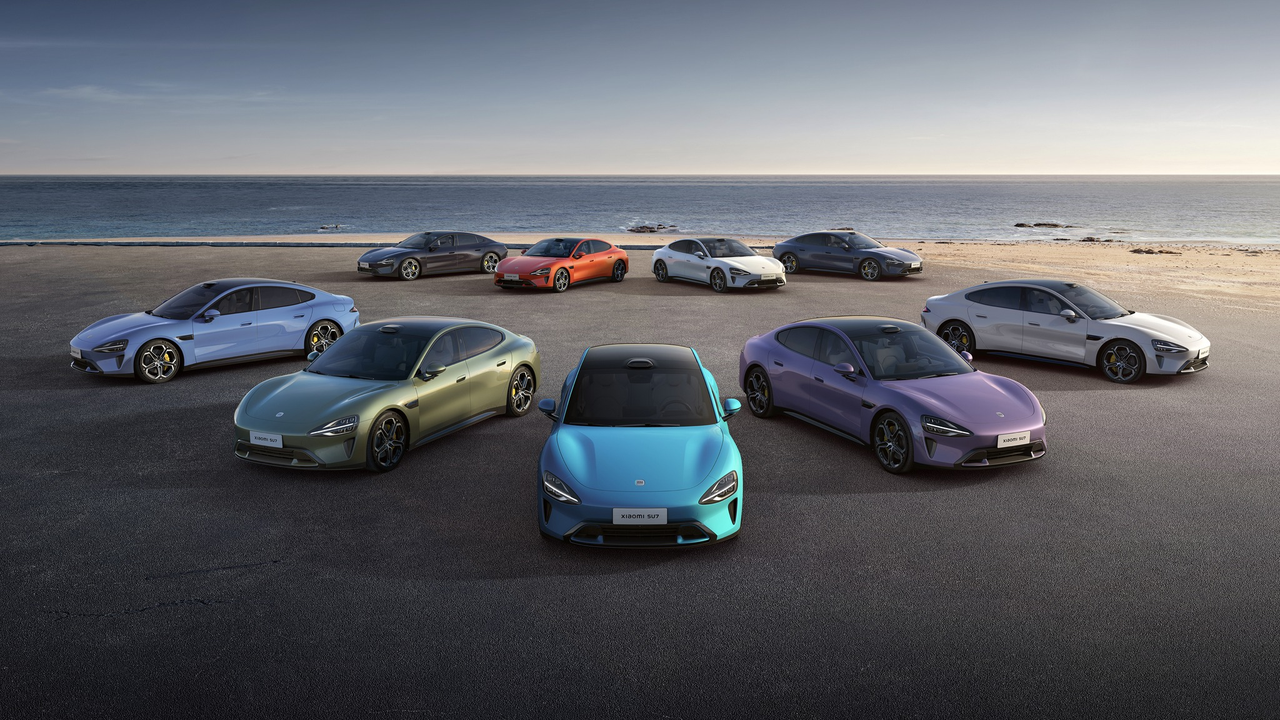Xiaomi SU7: Key Points
| Feature | Details | Positives | Negatives |
|---|---|---|---|
| Design | Sleek, futuristic design with Porsche Taycan influence | Modern aesthetic, potential head-turner | May lack originality for some |
| Performance | “Max” version rumored to have a dual-motor setup exceeding 660 horsepower and 0-100 km/h (0-62 mph) in under 4 seconds. Standard versions likely to have a range of powertrain options. | Powerful top-tier option, variety in standard models | Availability and pricing of high-performance “Max” version unconfirmed |
| Interior | Expected to have artificial leather interior and a large central touchscreen | Comfortable and practical materials, focus on driver experience | Potential absence of passenger-side screen |
| Technology | Integration with Xiaomi’s ecosystem allows control of car functions through smartphones and smart speakers. Potential for smart home integration. | Convenient features, connected car experience | |
| Space | Rear seat space might be limited for taller passengers exceeding 1.9 meters (6.2 ft). | Potential discomfort for taller passengers on long journeys | |
| Pricing | Starting price expected to exceed 200,000 RMB (approximately $28,000 USD). | Potentially less competitive compared to BYD and Tesla in the Chinese market | |
| Xiaomi Advantage | Seamless integration with Xiaomi’s ecosystem for control and smart home connectivity. | Unique selling proposition, enhances convenience | Success depends on how effectively Xiaomi leverages its ecosystem |
Let’s deep drive into it
The electric vehicle (EV) market in China is a battleground of innovation, with established giants like BYD and Tesla facing fierce competition from tech newcomers like Xiaomi. Among these challengers, the Xiaomi SU7 has emerged as a frontrunner, capturing consumer attention and sparking lively online discussions. This highly anticipated car promises to shake up the market with its sleek design, advanced technology, and integration with Xiaomi’s expansive ecosystem. Here, we delve deeper into the SU7’s features, potential drawbacks, and how it positions itself within the fiercely competitive Chinese EV landscape.
First Impressions: A Striking Design with Performance Under the Hood
Walking into a Xiaomi store, you’re greeted by the imposing presence of the SU7. This isn’t the first glimpse the public has had of the car, but it marks the official production version, boasting subtle refinements compared to earlier prototypes. The most noticeable change is the refined rear Xiaomi logo, where the lettering now sits closer together for a more streamlined appearance.
While the overall design retains a certain resemblance to the Porsche Taycan, the SU7 manages to carve out its own visual identity. The sleek lines and futuristic aura give it a distinct character, appealing to those seeking a car that exudes modern elegance. However, the similarities go beyond aesthetics. Rumors suggest the top-tier “Max” version of the SU7 might borrow performance cues from the Taycan, potentially boasting a dual-motor setup capable of exceeding 660 horsepower and achieving a 0-100 km/h (0-62 mph) acceleration time in under 4 seconds. Standard versions are expected to offer a range of powertrain options, catering to a wider range of driving needs and budgets.
Color options seem limited during previews, with a blue and grey on display. However, online leaks suggest a wider palette, including potentially bolder choices, to be unveiled at the official launch event. The blue variant, likely the “Max” configuration, is expected to boast a larger battery pack, translating to a longer driving range.
A Glimpse Inside: Technology Geared Towards Convenience
Pre-launch previews haven’t allowed access to the interior of the SU7, but based on available information, we can expect a technology-driven cabin. While the use of artificial leather might raise eyebrows amongst some, it’s a common choice in EVs to balance aesthetics with practicality. The potential absence of a passenger-side screen could be a point of contention; however, Xiaomi might compensate by offering a larger central infotainment touchscreen and a high-quality audio system for a more immersive in-car experience for all passengers.
One of the most anticipated features is the integration of Xiaomi’s ecosystem. Imagine pre-heating the car on a cold winter morning or remotely adjusting the air conditioning before you get in – all from the comfort of your home using your Xiaomi smartphone or smart speaker. Additionally, Xiaomi’s smart home devices can potentially integrate with the car, creating a truly connected experience. For example, upon arrival at home, the car might automatically unlock the door and adjust the lighting inside based on your preferences.
Addressing the Space Dilemma: Rear Seat Considerations
Rear seat space seems to be a potential sticking point. Concerns have been raised by Chinese media who tested the car, suggesting that individuals exceeding 1.9 meters (6.2 ft) might find headroom limited. This could be a significant drawback for taller passengers, especially on longer journeys. Xiaomi might offer adjustable headrests or a panoramic sunroof to mitigate this issue to some extent.
The Price Factor: Walking a Tightrope in a Competitive Market
Lei Jun, Chairman of Xiaomi, has hinted at a starting price exceeding 200,000 RMB (approximately $28,000 USD) for the SU7. This price point has sparked debate online, with many suggesting a more palatable range of 200,000 RMB to 260,000 RMB. Exceeding this range could significantly dent the SU7’s competitiveness within the Chinese market.
BYD offers a wide range of EVs at competitive prices, with some models starting well below 200,000 RMB. Additionally, Tesla maintains a strong presence, with a starting price below 250,000 RMB in China, placing Xiaomi in a precarious position. Pricing too high could alienate budget-conscious buyers, while going too low might raise concerns about quality and performance. Xiaomi must strike a delicate balance to find its sweet spot in this crowded marketplace.
The Xiaomi Advantage: Beyond the Car – A Connected Ecosystem
Despite the potential pitfalls, Xiaomi has a unique advantage: its well-established ecosystem. Just like their phones and tablets seamlessly connect and interact, the SU7 too will integrate with Xiaomi’s expansive ecosystem. This allows users to control various car functions through their mobile devices or smart speakers.
Xiaomi SU7: Key Information
Design:
- Sleek, futuristic design with a hint of Porsche Taycan inspiration.
- Multiple color options expected, with blue likely representing the top-tier “Max” configuration.
Performance:
- Rumors suggest the “Max” version might offer a dual-motor setup exceeding 660 horsepower and achieve 0-100 km/h (0-62 mph) in under 4 seconds.
- Standard versions likely to have a range of powertrain options.
Interior:
- Artificial leather interior expected.
- Potential absence of a passenger-side screen, but a larger central touchscreen and high-quality audio system might be offered.
Technology:
- Integration with Xiaomi’s ecosystem allows control of car functions through smartphones and smart speakers.
- Potential for smart home integration, creating a connected car experience.
Space:
- Rear seat space might be limited for taller passengers exceeding 1.9 meters (6.2 ft).
Pricing:
- Starting price expected to exceed 200,000 RMB (approximately $28,000 USD).
- Competitive pricing crucial for success in China’s crowded EV market dominated by BYD and Tesla.



